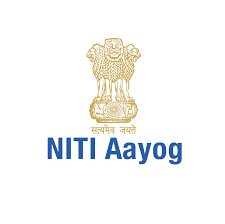CURRENT AFFAIRS
Get the most updated and recent current affair content on Padhaikaro.com
State Health Index: NITI Aayog
- Vaid's ICS, Lucknow
- 29, Dec 2021

Why in News?
- Recently, NITI Aayog released the fourth edition of the State Health Index for 2019–20.
- The report, titled “Healthy States, Progressive India”.
About State Health Index
- It is an annual tool to assess the performance of states and Union Territories(UTs) and has been compiled and published since 2017.
- It ranks states and Union Territories on their year-on-year incremental performance in health outcomes as well as their overall status.
- It has been developed by NITI Aayog, with technical assistance from the World Bank, and in close consultation with the Ministry of Health and Family Welfare (MoHFW).
- Domains: It is a weighted composite index based on 24 indicators grouped under the domains of ‘Health Outcomes’, ‘Governance and Information’, and ‘Key Inputs/Processes’.
- Each domain has been assigned weights based on its importance with the higher scores for outcome indicators.
- Health outcomes, for instance, includes parameters such as neonatal mortality rate, under-5 mortality rate, the sex ratio at birth.
- Governance includes parameters such as institutional deliveries, average occupancy of senior officers in key posts earmarked for health.
- The‘ key inputs’ domain consists of the proportion of shortfall in health care providers to what is recommended, functional medical facilities, birth and death registration and tuberculosis treatment success rate.
- Aims: To nudge states/UTs towards building robust health systems and improving service delivery.
- This has been instrumental in shifting the focus from budget spending and inputs to outputs and outcomes.
Major Findings
- The ranking is categorized as ‘The Larger States’, ‘Smaller States’ and ‘Union Territories’ to ensure comparison among similar entities.
- Among the ‘Larger States’, in terms of annual incremental performance, Uttar Pradesh, Assam and Telangana are the top three ranking states.


FACTS FOR PRELIMS:
Desmond Tutu
Early Life:
- He was born in 1931 in Klerksdorp, Transvaal. His father was a teacher, and he himself was educated at Johannesburg Bantu High School and in 1954 he graduated from the University of South Africa.
Career
- He worked as a teacher and recalled how the system of educating blacks infuriated him.
- He quit teaching in 1957 to join the church and was ordained as a priest in 1961.
- In 1975 he was appointed Dean of St. Mary’s Cathedral in Johannesburg, the first black to hold that position.
- He was named the first Black Archbishop of Cape Town in 1986.
- He is an honorary doctor of a number of leading universities in the USA, Britain and Germany.
Contributions
- He is regarded as a contemporary anti-apartheid icon Nelson Mandela and became the face of the moment outside the country.
- He was one of the driving forces behind the movement to end racial segregation and discrimination by the white minority government in South Africa from 1948 till the year 1991.
- He spearheaded grassroots campaigns around the world that fought against apartheid.
- He has been regarded as an outspoken human rights activist who highlighted and spoke out on a range of issues around the world including climate change, Israel-Palestine conflict, among others.
Kaavi Art
- Recently, the Prime Minister of India praised a Goan artist’s efforts to revive the centuries-old Kaavi art form.
About Kaavi Art
- It is a form of painting on the inner and outer walls of the sacred spaces.
- It covers the ancient history of India in itself.
- Actually, ‘Kaava’ means red soil. In ancient times, red clay was used in this art.
- It is found in the Konkan region of the country, especially in temples of Goa, Maharashtra and Karnataka.
- During the Portuguese rule in Goa, people who migrated from there introduced the people of other states to this wonderful painting form.